Coffee workshop study classroom | Analysis of roasting and brewing of raw beans in coffee producing areas treated with West Java honey
Professional coffee knowledge exchange more coffee bean information please follow the coffee workshop (Wechat official account cafe_style)
Indonesian Java Coffee _ Java Coffee Bean Flavor Manor
West Java Honey Processing
West Java honey treatment
| 01 | production area profile |
West Java, Indonesia
West Java Province is a first-tier administrative district of Indonesia. Located in the western part of Java, facing the Java Sea to the north and the Indian Ocean to the south, including offshore islands, covering an area of 46300 square kilometers, Java has a tropical rain forest climate, which is hot and humid all the year round. The plains along the northern coast have the highest temperatures, while the mountains are much cooler. High humidity often creates a debilitating climate.
From November to March of the next year is the northwest monsoon period, rainy and cloudy; from April to October is the southeast monsoon period, with more sunny days and less rainfall. The average annual rainfall in Jakarta is about 1760 mm (69 inches). The average daily maximum temperature in Jakarta is 30 ℃ (86 ℉) and the lowest is 23 ℃ (74 ℉). In Tosari (Tosari, 1735 m (5692 m) above sea level) in the inland highlands, the average temperature is 220.8 ℃ (72m 47 ℉). Because volcanic ash periodically fertilizes the land, the soil in Java is very fertile.

Aromanis Edini Manor
Aromanis "Aiqini" is a traditional dessert unique to Indonesia. It is made from a snack made from the basic ingredients of flour and sugar. Here, the coffee is named after Aromanis, indicating that the coffee bean tastes like marshmallows.
Origin: Sunda Hejo, West Java, Indonesia
Altitude: 1400-1600m
Soil quality: mainly volcanic black soil
The plantations are basically above 1400 meters above sea level, supplemented by typical local volcanic soil, creating a unique flavor.
Product name: Indonesian West Java Honey treatment
Producing area: Tiegula Mountain, West Java
Variety: S795
Treatment method: sun honey treatment
Flavor: mango, red wine, peach juice, strong fruit aroma, with plum and jackfruit flavor, clean and sweet.
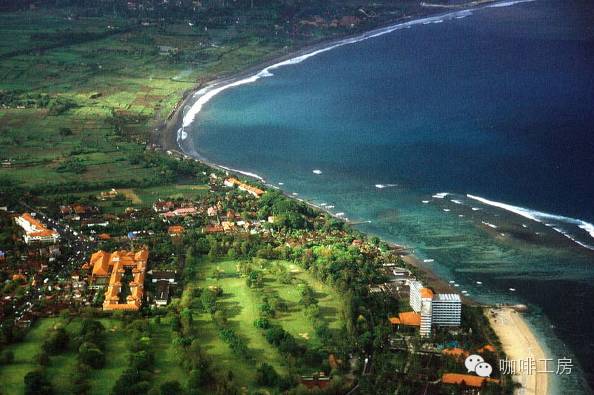
02 | processing method
This bean is picked manually to ensure the stability of the fruit. After picking, the exocarp is peeled off and the flesh is preserved for sun treatment, which is what we call the sun + honey treatment. After about a month of sun drying, wash and other treatment, and then let the beans stored for about half a month before packaging.
Sun + honey treatment, the only purpose of this complex and high-risk process is to create a more complex and fuller taste spectrum. Reflect the wonderful feeling brought by the complex pedigree of this bean.
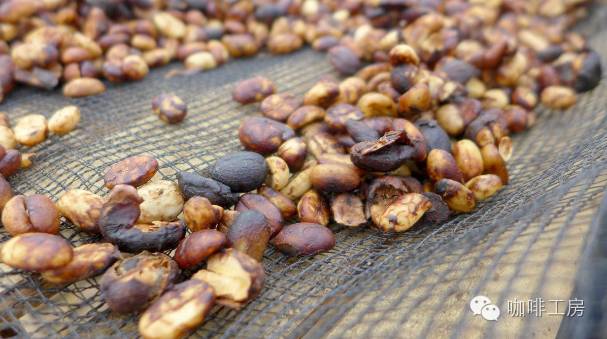
03 | Analysis of raw beans
The breed of this inexplicably amazing bean belongs to S795. Known as Jember in Indonesia, S795 is introduced by Jember Coffee Research Center, a coffee research center in East Java, to Javanese farmers after introducing local varieties from India, and Javanese farmers directly call this S795 Jember.
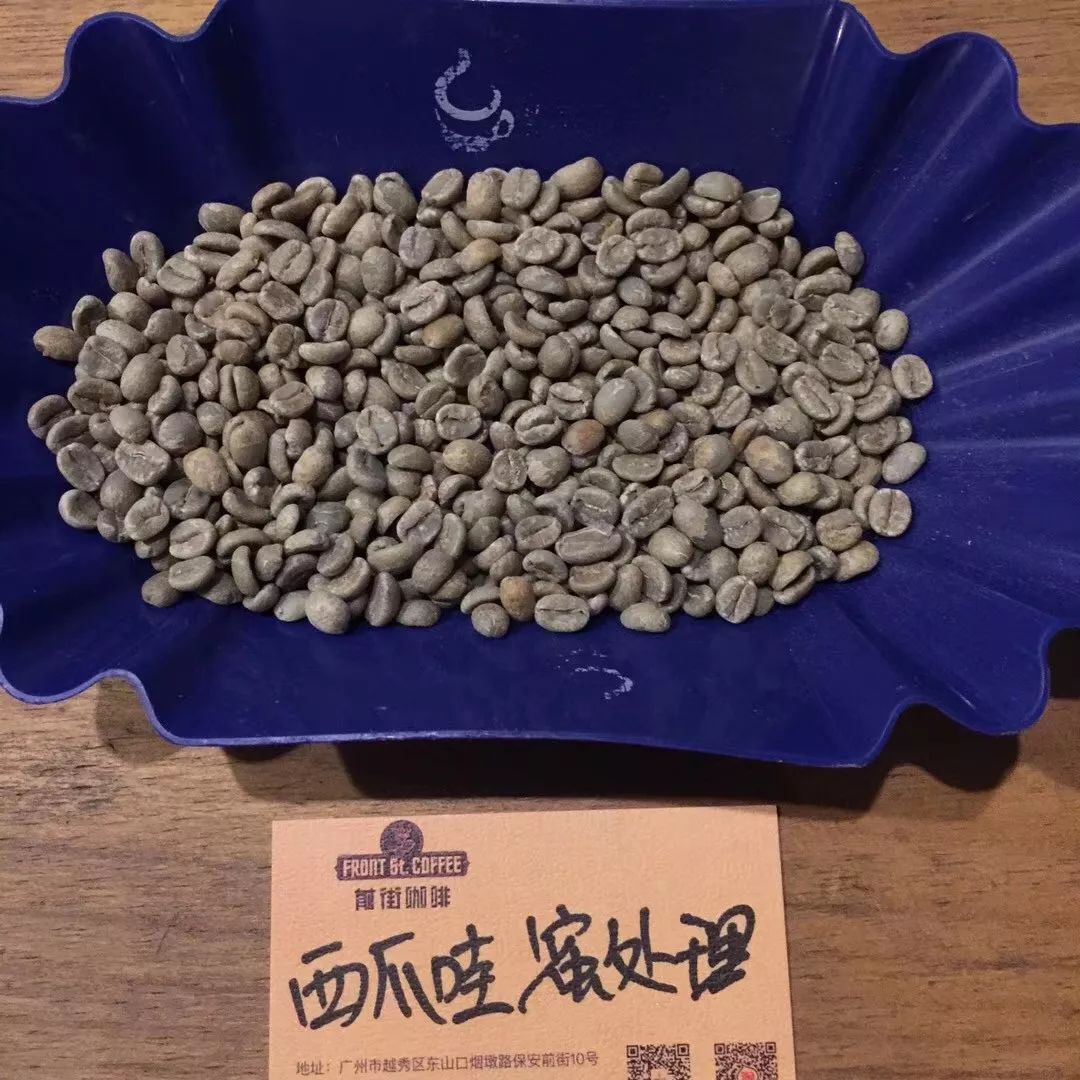
S795 bean body color is blue and green, its original tree species natural variation comes from S288, while S288 is an excellent hybrid variety cultivated in India in 1946. S288 was named S26 after being mixed with Typica and S288 (the first generation), because the first generation of S288 was crossed between Arabica and Liberian Liberica and always had the fishy smell of Liberia. Indian botanists then used the first generation of S288 and Typica hybrid Kent and the second generation of S288 to become the present S795.
The current S795 variety is of Liberian blood, but its flavor is more elegant after carefully cultivated by Indian botanists. at the same time, due to inheriting the characteristics of strong disease resistance and high yield, the Indonesian and Indian governments have been vigorously promoting the cultivation of this variety in recent years.
From the complex life experience of S795, we can see that it is an artificially selected hybrid variety with Typica and liberica lineages in its blood, and years of careful breeding have created its unique flavor.
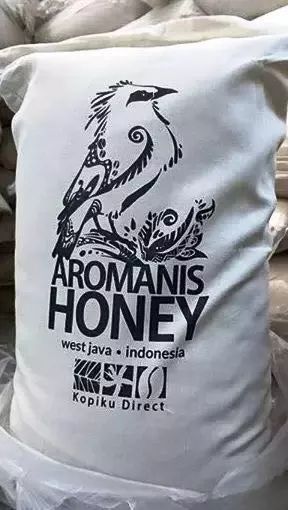
04 | Baking analysis
West Java raw beans have a high density, firepower adjustment should be especially careful, and fruit flavor and sweetness should be highlighted. If you choose moderate roasting, you can fully show the uniqueness of raw beans. After 1 minute, the initial firepower will be larger. Until the early stage of dehydration, adjust the firepower early to make the taste and aroma of the coffee uniform.
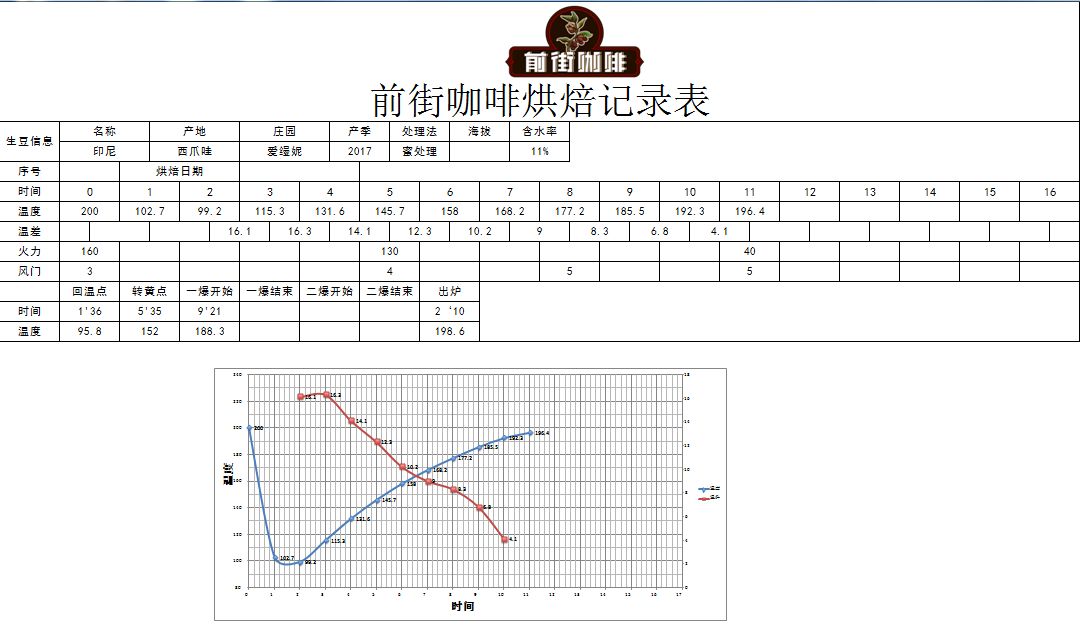
Yangjia 800N, raw bean 550g, specific operation:
Put the furnace temperature to 200 degrees Celsius, set the throttle to stew for 1 minute, adjust the firepower to 160 degrees, the throttle remains unchanged, adjust the firepower to 165 degrees, drop to 130 degrees, bake to 5: 35 ", the temperature is 152 degrees, the bean table turns yellow, the smell of grass disappears completely, dehydration is completed, throttle tune 4.
In the 9th minute, ugly Hu wrinkles and black markings appear on the bean table, and the smell of toast obviously changes to the smell of coffee, which can be defined as a prelude to an explosion. at this time, listen clearly to the sound of an explosion point, to 9: 21 "start an explosion, small firepower remains the same, the throttle is fully open 5 (the firepower should be very careful, not so small as no cracking sound) 40 degrees, 198.6 degrees when the pot.
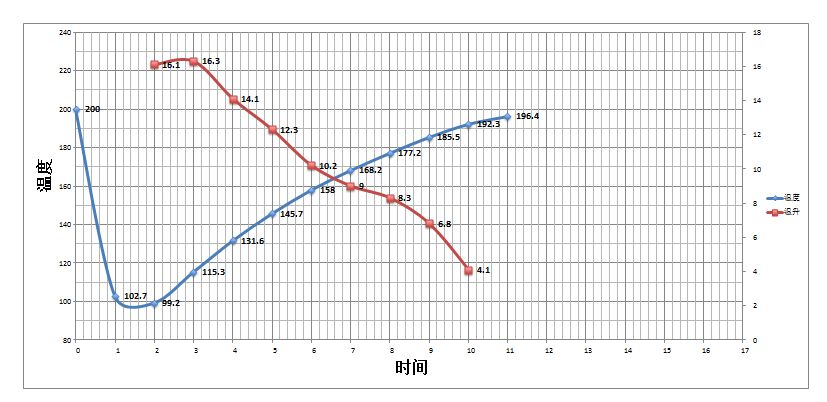
The taste of cup test
Dry aroma: strong aromas of flowers, dried fruit and red wine
The sour taste is gentle and not bright, keeping it elegant under a variety of complex fruit flavors.
In view of the obvious flavor of preserved fruit, the whole tends to be mellow and strong in texture, but not too thick.
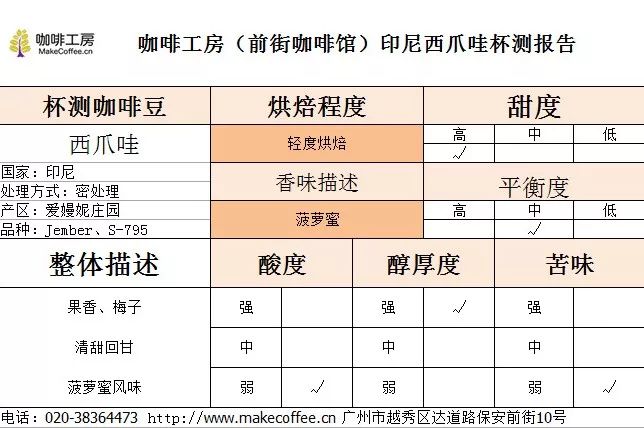
The main feature of this bean is its complex sweetness and fruity aroma, which is more obvious than the African Yega Chuefei, which is also famous for its floral aroma. Its taste spectrum is inclined to the tropical fruits with heavy flavors such as mango and polo honey, which are complex and calm, while the unique honey treatment techniques bring a faint flavor of red wine. This bean is a typical example of sweetness, even in the global coffee pedigree.
04 | Cooking analysis
Hand punch reference
Stew with cake cup, 15g powder and 32g water for 30 seconds, extract at 89-90 degrees Celsius, 1:14, grind small Fuji 4 at 1:14, water injection to 140ml for the second time, and then slowly pour water until the water drops, the speed is uniform, the water level should not be too high, water injection again until 220ml stops, extraction time 2:15 seconds ~
When brewing, it quickly brings out the attractive aroma of preserved fruit. After the entrance, it feels the complex fragrance of flowers, the rhyme is fast and strong, the taste spectrum is partial to the feeling of mango and Borromi, and the sweet taste of fructose is obvious. It is estimated that this is the origin of the bean named Aromanis.
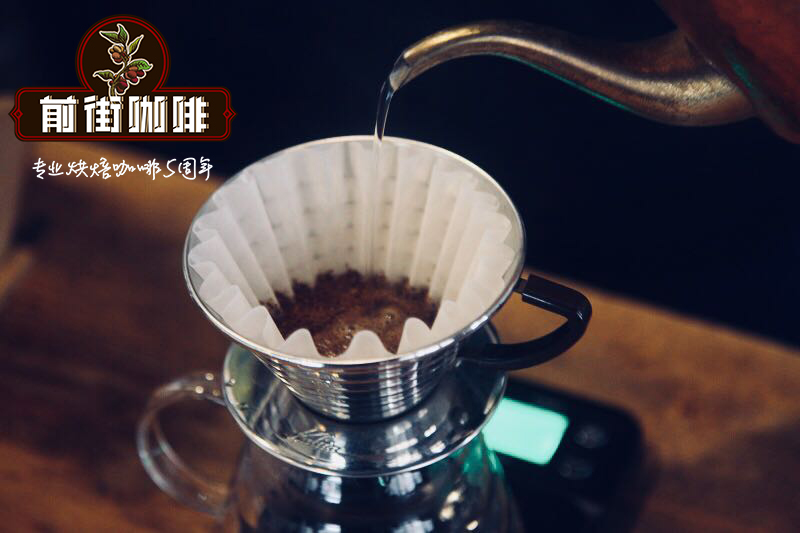
Coffee workshop, is setting up a coffee study classroom column.
Share the learning results with everyone and the industry.
Characteristics of Flavor and Taste of Fine Coffee beans treated with honey Honey in West Java, Indonesia
Important Notice :
前街咖啡 FrontStreet Coffee has moved to new addredd:
FrontStreet Coffee Address: 315,Donghua East Road,GuangZhou
Tel:020 38364473
- Prev
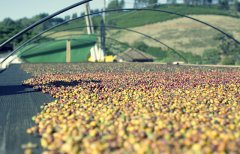
Brazilian single Coffee Manor Ipanema Manor Sweet Sun Coffee Flavor description suggestion
Professional coffee knowledge exchange more coffee bean information please follow the coffee workshop (Wechat official account cafe_style) Brazilian coffee flavor characteristics manor area _ Brazilian boutique coffee name: Brazil Ipanema Manor Sweet Sun (Brazil Ipanema Dulce Natural) production area: South Minas (Sul de Minas) region Manor: Ipanema Manor (Fazend)
- Next
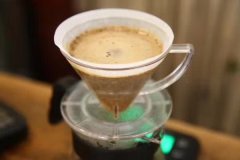
KONO filter cup + gold Manning hand flushing experience medium and deep roasting coffee beans hand brewing suggestion
Professional coffee knowledge exchange more coffee bean information please pay attention to the coffee workshop (Wechat official account cafe_style) Manning and Colombia's difference, suitable for who to drink because our customer group is relatively wide, although the mainstream light roasted beans are more, but the small branch guests still appreciate the medium and deep roasted beans, there are many guests in the shop all love the medium and deep roasted beans.
Related
- Detailed explanation of Jadeite planting Land in Panamanian Jadeite Manor introduction to the grading system of Jadeite competitive bidding, Red bid, Green bid and Rose Summer
- Story of Coffee planting in Brenka region of Costa Rica Stonehenge Manor anaerobic heavy honey treatment of flavor mouth
- What's on the barrel of Blue Mountain Coffee beans?
- Can American coffee also pull flowers? How to use hot American style to pull out a good-looking pattern?
- Can you make a cold extract with coffee beans? What is the right proportion for cold-extracted coffee formula?
- Indonesian PWN Gold Mandrine Coffee Origin Features Flavor How to Chong? Mandolin coffee is American.
- A brief introduction to the flavor characteristics of Brazilian yellow bourbon coffee beans
- What is the effect of different water quality on the flavor of cold-extracted coffee? What kind of water is best for brewing coffee?
- Why do you think of Rose Summer whenever you mention Panamanian coffee?
- Introduction to the characteristics of authentic blue mountain coffee bean producing areas? What is the CIB Coffee Authority in Jamaica?

